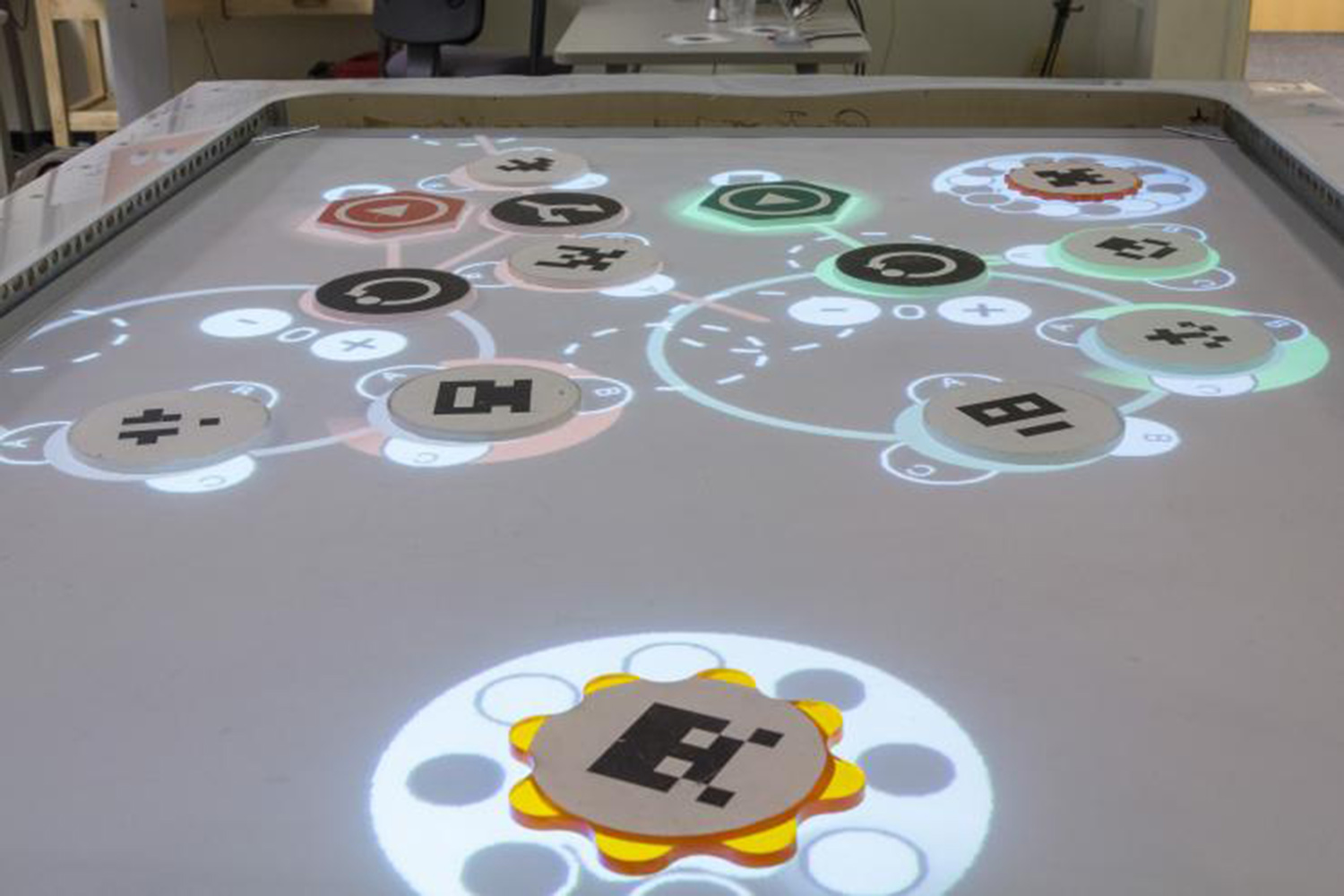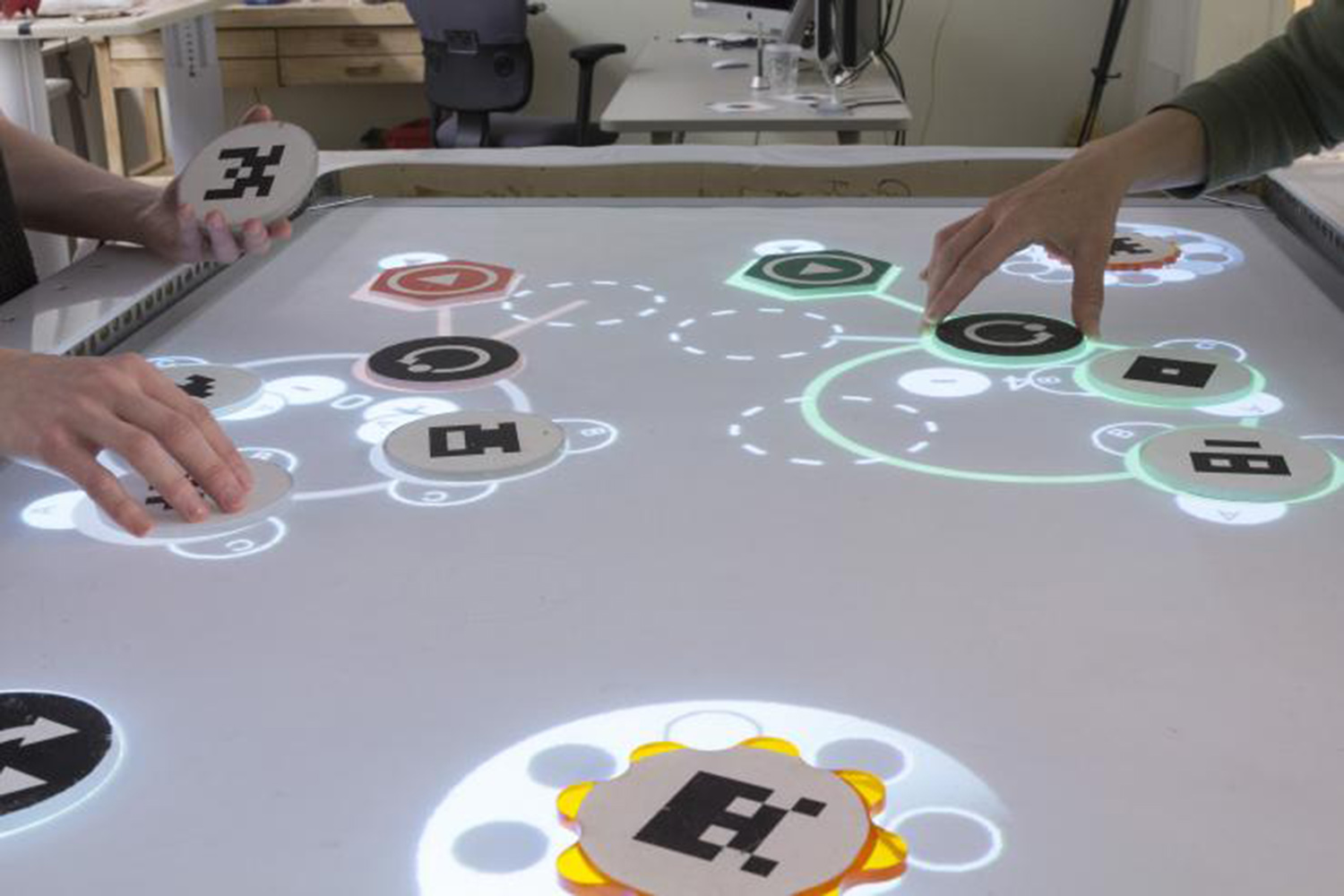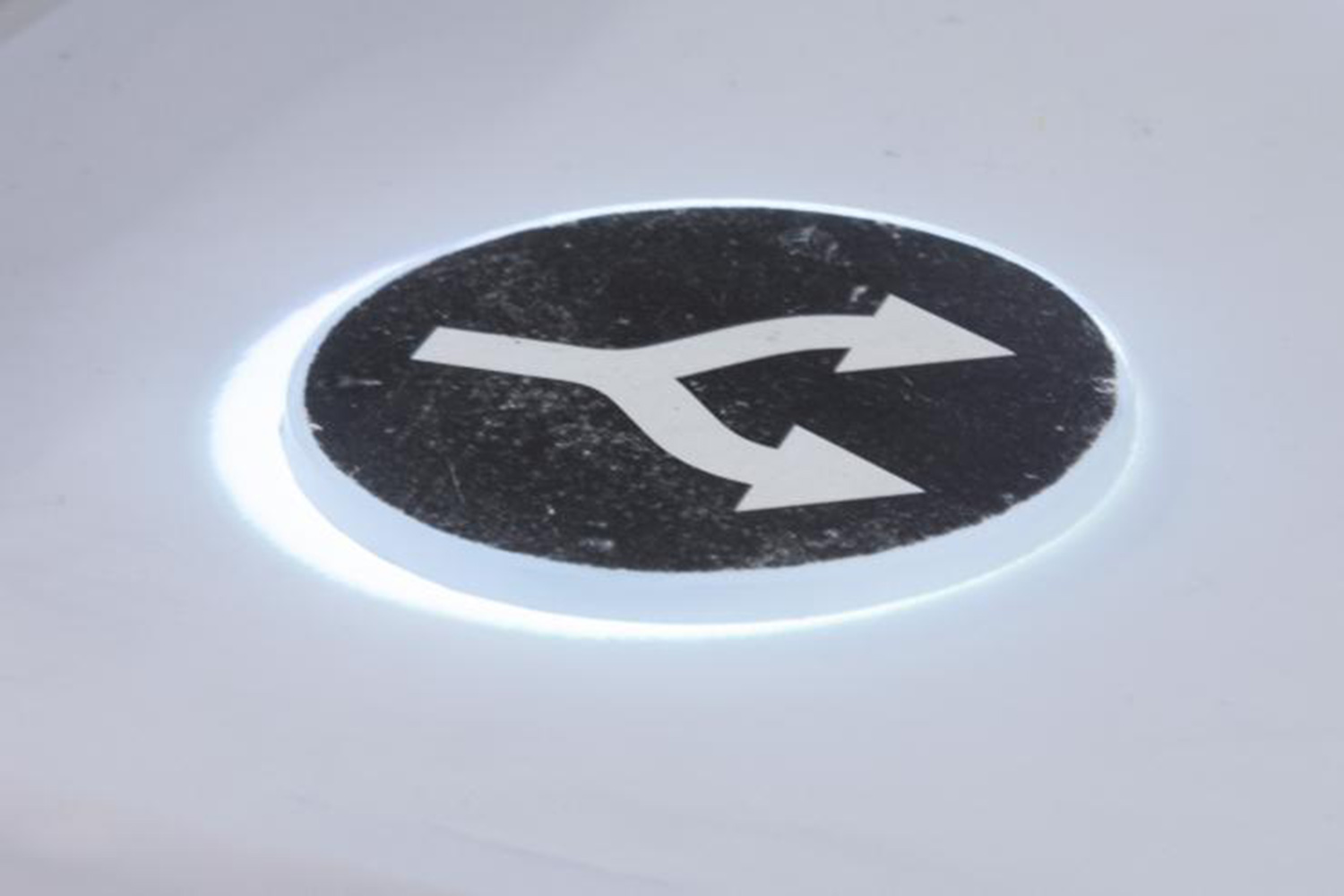The table emerged from a design challenge that Brian Magerko, the project lead and an associate professor at GT, posed to his students. Magerko and his team had already created EarSketch, an online platform that allows high school students to make music through code, and in doing so practice languages like Python, JavaScript, and Blockly by blending beats, effects, and samples. Magerko asked his college students to apply a similar approach to an informal learning environment, and to compress the weeks’ worth of learning time involved in EarSketch to just a few minutes.
“We focus on musical genres that have a rich history in sample-based composition, like hip-hop and electronica.”
The result looks something like a digital air hockey table equipped with pucks and speakers. Using computer vision, the table’s interactive surface reads printed markers on the pucks, each of which corresponds to a sampled sound or command. Through these commands, kids are introduced to basic coding concepts like iterations, functions, and conditionals, accompanied by contemporary music like hip-hop and electronica.
“Traditional Western music is fairly difficult to compose in, especially for a novice with no prior training in music theory,” Magerko tells Digital Trends. “Rather than try to tackle that difficult problem, we sidestep the theory issue by focusing on musical genres that have a rich history in sample-based composition, like hip-hop and electronica.”
TuneTable is designed to let students manipulate musical samples, which Magerko says gives it a relatively easy learning curve. “It also doesn’t hurt that these genres are wildly popular in U.S. youth culture,” he says, “adding the potential for a higher degree of personal relevance to a learner compared to writing programs to make simple classical melodies and harmonies, for instance.”
Although TuneTable is still in its prototype phase, the device is expected to be installed next year at the Museum of Design Atlanta and Chicago’s Museum of Science and Industry. In the meantime, Magerko and his team are considering adding other basic coding concepts to challenge kids to explore further.
“The real trick is to balance a gentle initial learning curve — and different age users — with the potential for exploration and expressivity,” he says.





